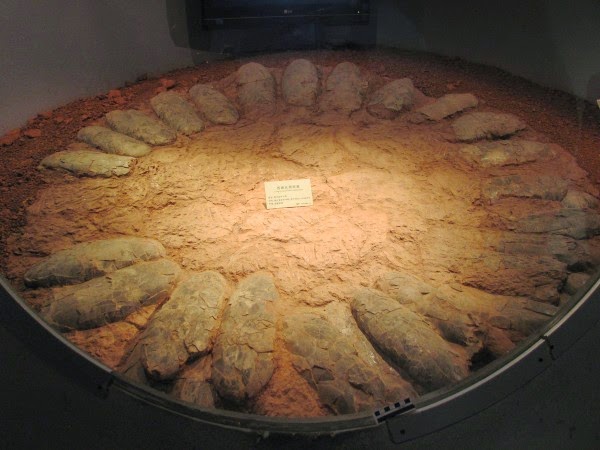
It must have been a weighty question for dinosaurs, some of which were dutiful parents that brooded their eggs like birds: How could they sit on their eggs without breaking them? According to new research presented at the Society of Vertebrate Paleontology annual meeting here, some rhinoceros-sized dinosaurs successfully brooded in open-air nests by arranging the eggs so they wouldn’t break. The study shows that even the largest dinosaurs in this group probably provided some parental care.
Researchers have found a number of fossilized nests from the group of dinosaurs called oviraptorosaurs, fairly close relatives of early birds. (The name means “egg-thief lizards,” because researchers originally assumed the creatures ate the eggs that were so often found with them. But scientists now realize the animals were nesting, not feasting.) Several fossil nests include an adult, apparently a brooding parent buried alongside its eggs. Those specimens were about the size of a modern ostrich—about 100 kilograms. But some oviraptorosaurs weighed 3000 kilograms, as much as a modern rhinoceros. Whether those largest oviraptorosaurs, with eggs up to 40 centimeters in diameter, had open nests and brooded like their smaller cousins or buried their eggs more like modern crocodiles has been an open question.
Open nests require less porous eggshells to prevent water from escaping. Previous studies used indirect calculations to estimate how much water could have escaped through the shells and concluded that they were too porous to be stored in open nests. But Kohei Tanaka of the University of Calgary in Canada took a closer look. He calculated the porosity of the oviraptorosaurus eggs and compared them with the porosity of modern eggs in buried nests and open nests. The results showed that the oviraptorosaur eggs were less porous than the earlier studies had indicated. That suggests that even the largest “ovis” built open nests, Tanaka says.
Tanaka then calculated how much weight the eggs could bear before they cracked. He found that the eggs of small and medium-sized oviraptorosaurs could have borne the weight of an adult sitting on a nest of a dozen or so tightly packed eggs. But the eggs of the largest animals would have broken.
Finally, he analyzed nest shape. The smaller dinosaurs built nests with the eggs arranged like the petals of a daisy, closely packed together. The nests of the larger oviraptorosauruses, however, have eggs arranged in a larger ring around an open space. An adult could have plopped into the middle, keeping most of its weight on the ground instead of on the eggs, Tanaka says. He concludes that the dinosaurs’ egg-laying behavior seems to have evolved to allow even the largest animals to sit in their nests.
Given the precise arrangement of eggs in fossil nests, the eggs could have been partially buried—or at least nestled—in sediment, even when a parent was brooding them in an “open” nest, says David Varricchio, a paleontologist at Montana State University, Bozeman. But he finds Tanaka’s calculations persuasive and agrees that even the biggest oviraptorosaurs probably sat on their eggs.
Note : The above story is based on materials provided by American Association for the Advancement of Science. The original article was written by Gretchen Vogel.










